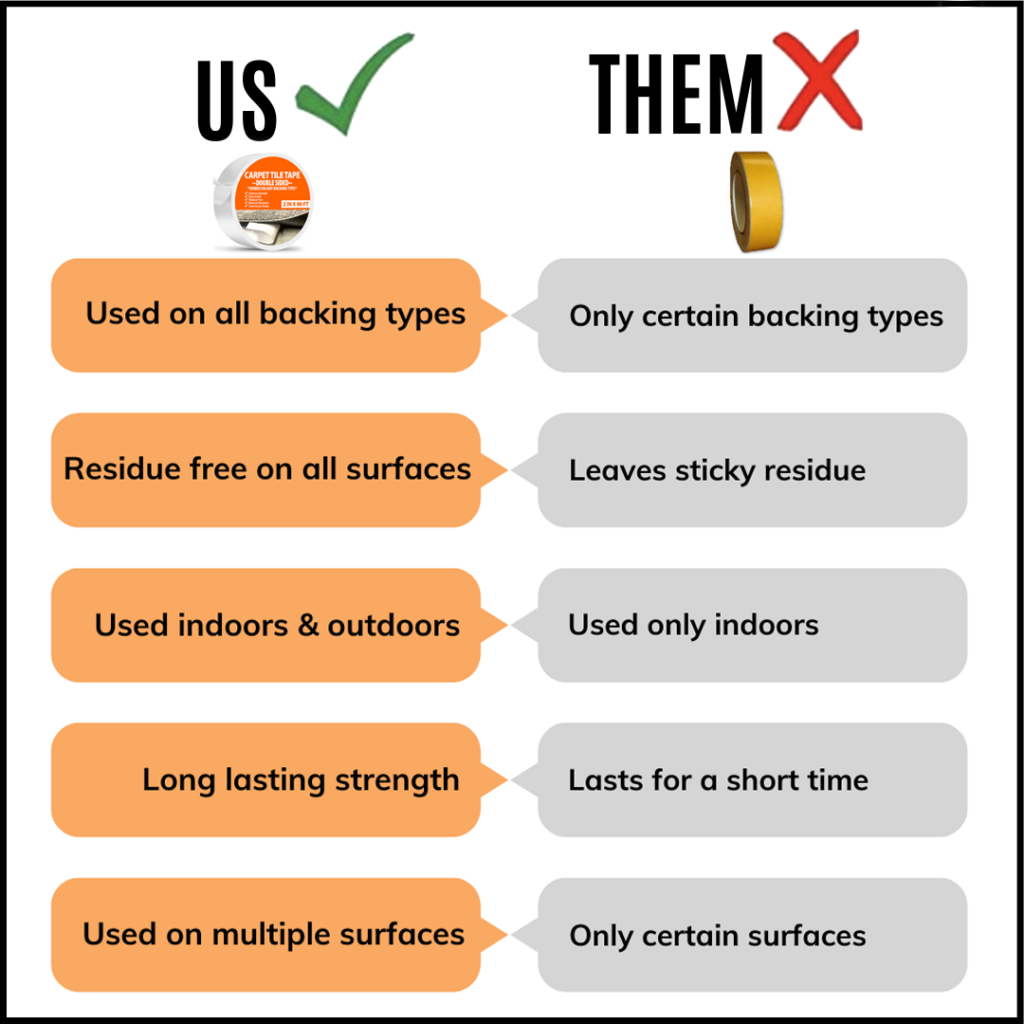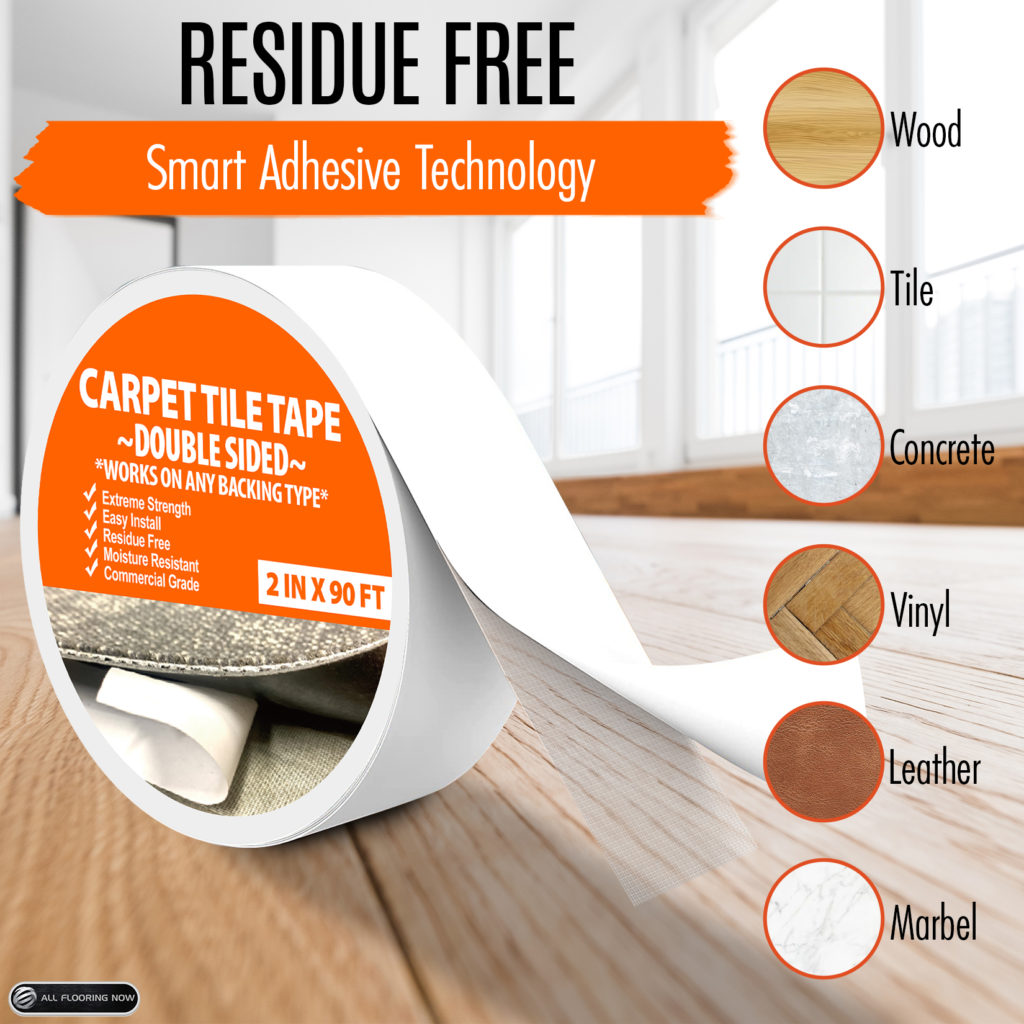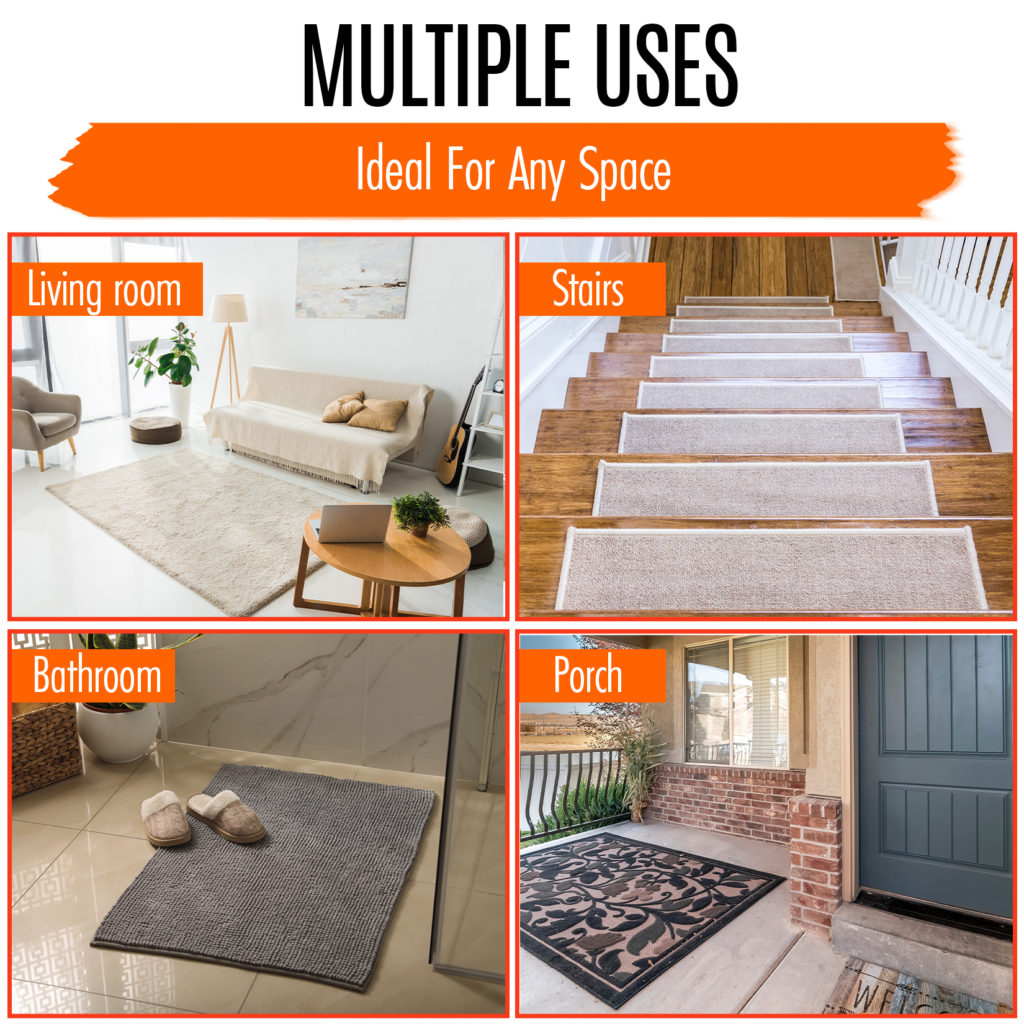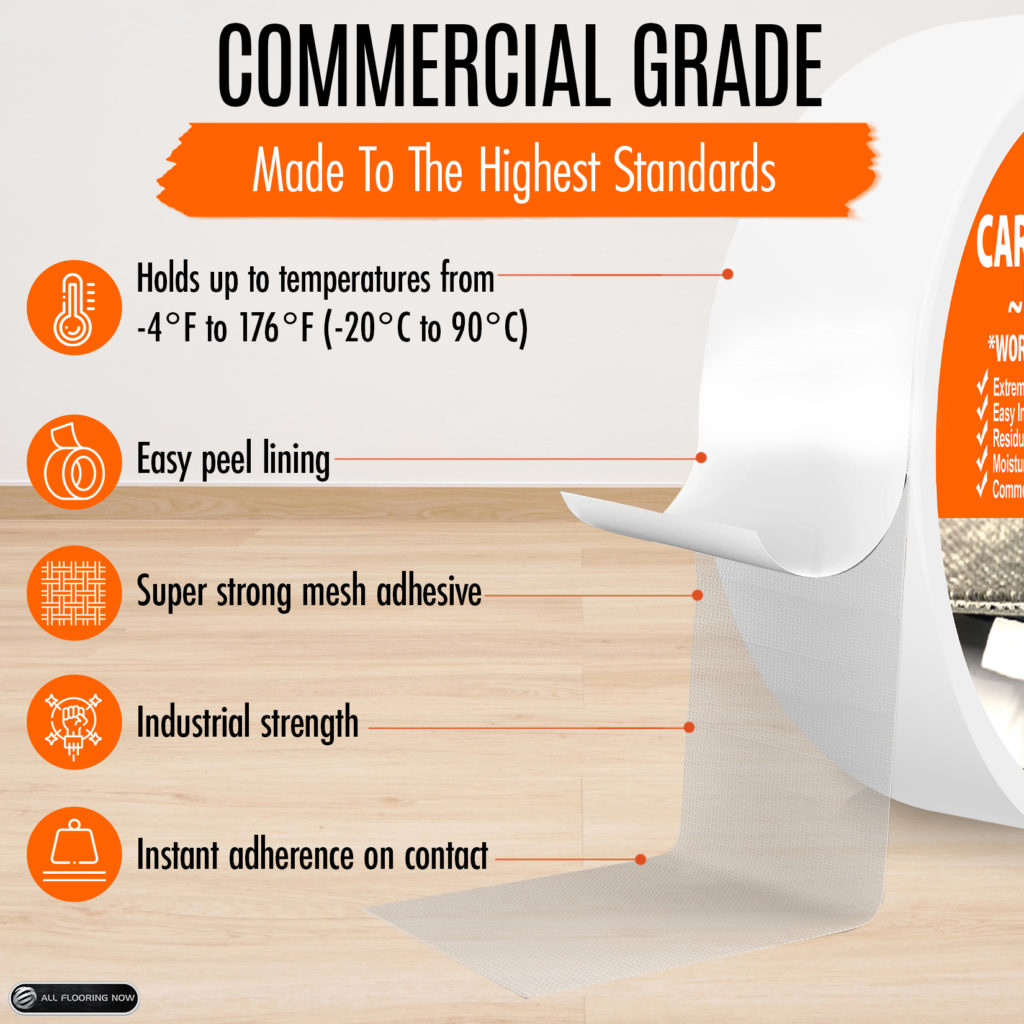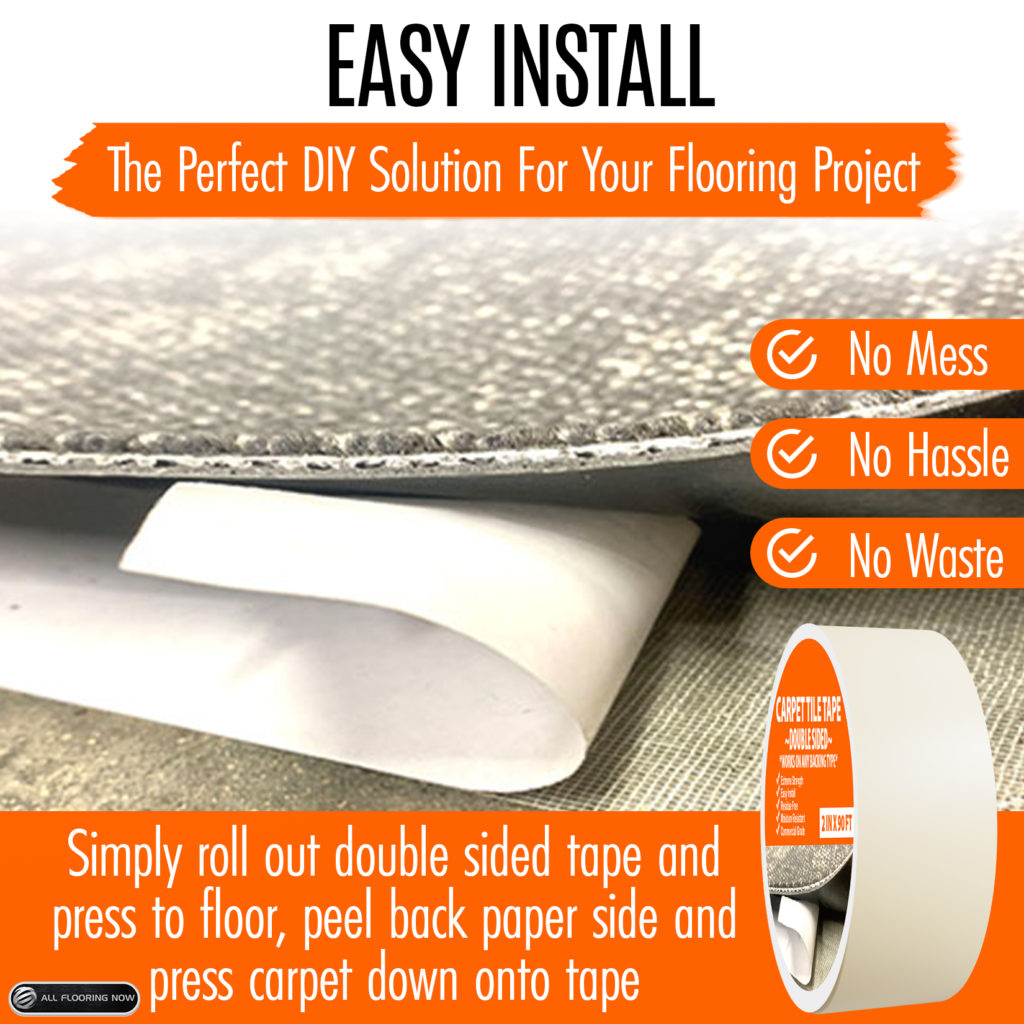Common Mistakes to Avoid When Using Carpet Tape
Carpet tape is an essential tool for securing rugs, runners, and carpets, providing stability and safety in homes and workplaces. However, improper use can lead to ineffective adhesion, damage to flooring, and difficulties in removal. By understanding and avoiding common mistakes, you can ensure a seamless and hassle-free experience when using carpet tape. This article explores the most frequent errors people make when applying carpet tape and how to prevent them.
1. Skipping Surface Preparation
One of the biggest mistakes when using carpet tape is failing to prepare the surface properly. A dirty or damp floor can significantly reduce the tape’s adhesive strength, causing the carpet to shift over time.
How to Avoid This Mistake:
- Always clean the floor thoroughly before applying carpet tape. Vacuum or sweep to remove dust and debris.
- If necessary, wipe down the area with a mild cleaner and allow it to dry completely.
- Avoid using carpet tape on damp floors, as moisture can weaken the adhesive and lead to peeling.
2. Using the Wrong Type of Carpet Tape
Not all carpet tapes are created equal. Some are designed for temporary use, while others are meant for long-term installations. Using the wrong tape can result in poor adhesion or floor damage.
How to Avoid This Mistake:
- Double-sided carpet tape: Best for lightweight rugs and temporary installations.
- Heavy-duty carpet tape: Ideal for high-traffic areas and long-term applications.
- Residue-free carpet tape: Suitable for hardwood, laminate, and delicate surfaces where easy removal is required.
- Waterproof outdoor carpet tape: Designed for securing artificial grass, patio rugs, or carpets exposed to moisture.
- Always check the manufacturer’s recommendations to ensure the tape is compatible with your flooring type.
3. Applying Too Much or Too Little Tape
Using too little tape can cause the carpet to shift, while using too much can make removal difficult and leave residue behind. Finding the right balance is key.
How to Avoid This Mistake:
- Apply tape along the edges and corners for maximum hold.
- For larger rugs, add a few strips in the middle to prevent movement.
- Avoid covering the entire underside of the carpet with tape, as this can make removal difficult and damage floors.
4. Sticking Tape Directly to the Carpet First
Many people make the mistake of applying the tape to the carpet instead of the floor, leading to weak adhesion and difficulty positioning the rug correctly.
How to Avoid This Mistake:
- Always apply the tape to the floor first, pressing it down firmly.
- Once secured, remove the backing to expose the adhesive before placing the carpet over it.
- This method ensures the tape adheres properly to the floor and provides a strong bond.
5. Ignoring High-Traffic Areas and Edges
Carpets in high-traffic areas are more prone to lifting and shifting if not secured properly. Neglecting edges and corners can lead to tripping hazards.
How to Avoid This Mistake:
- Reinforce high-traffic areas by applying additional strips of tape.
- Pay special attention to edges and corners, as these areas tend to lift first.
- Regularly check the carpet to ensure it remains secure, especially in frequently used areas.
6. Not Pressing the Tape Down Firmly Enough
Failing to press down the tape firmly after application can lead to weak adhesion, causing the carpet to move or lift prematurely.
How to Avoid This Mistake:
- After placing the tape, press down firmly to ensure a strong bond.
- Use a rolling pin or heavy object to apply even pressure across the tape.
- Walk over the carpeted area to reinforce adhesion.
7. Overlooking Removal Techniques
Many users struggle with removing carpet tape, often peeling it off too quickly or using the wrong method, which can leave residue or damage floors.
How to Avoid This Mistake:
- Remove tape slowly and at a low angle to minimize residue.
- If adhesive remains, use rubbing alcohol, adhesive remover, or warm soapy water to clean it off.
- For delicate flooring, test the removal method in an inconspicuous area before applying it to a larger surface.
8. Applying Tape on Unsuitable Surfaces
Carpet tape is not compatible with all surfaces. Applying it on textured or uneven floors can lead to weak adhesion, while using it on delicate surfaces can cause damage.
How to Avoid This Mistake:
- Avoid using carpet tape on rough or uneven surfaces like brick or unfinished wood.
- For delicate surfaces like marble, laminate, or vinyl, choose a residue-free option.
- Check the tape’s specifications to ensure compatibility with your flooring material.
9. Ignoring Temperature and Humidity Conditions
Extreme temperatures and humidity can affect the adhesive strength of carpet tape. Applying tape in unfavorable conditions can lead to premature peeling or residue buildup.
How to Avoid This Mistake:
- Avoid applying carpet tape in excessively humid or cold conditions.
- If working in a cold environment, allow the tape to reach room temperature before application.
- Store carpet tape in a cool, dry place to maintain its adhesive properties.
10. Not Testing a Small Area First
Applying carpet tape without testing it first can result in unexpected issues, such as floor damage or difficulty in removal.
How to Avoid This Mistake:
- Before applying carpet tape to a large area, test it in a small, inconspicuous spot.
- Check if the tape adheres well and if it leaves any residue upon removal.
- This simple step can prevent costly mistakes and ensure the best results.
Final Thoughts
Carpet tape is a practical and effective solution for securing rugs and carpets, but improper use can lead to frustration and potential damage. By avoiding these common mistakes—such as skipping surface preparation, using the wrong type of tape, or failing to reinforce edges—you can ensure a secure, long-lasting hold while protecting your floors. Following best practices will not only improve performance but also make removal easier when the time comes.
